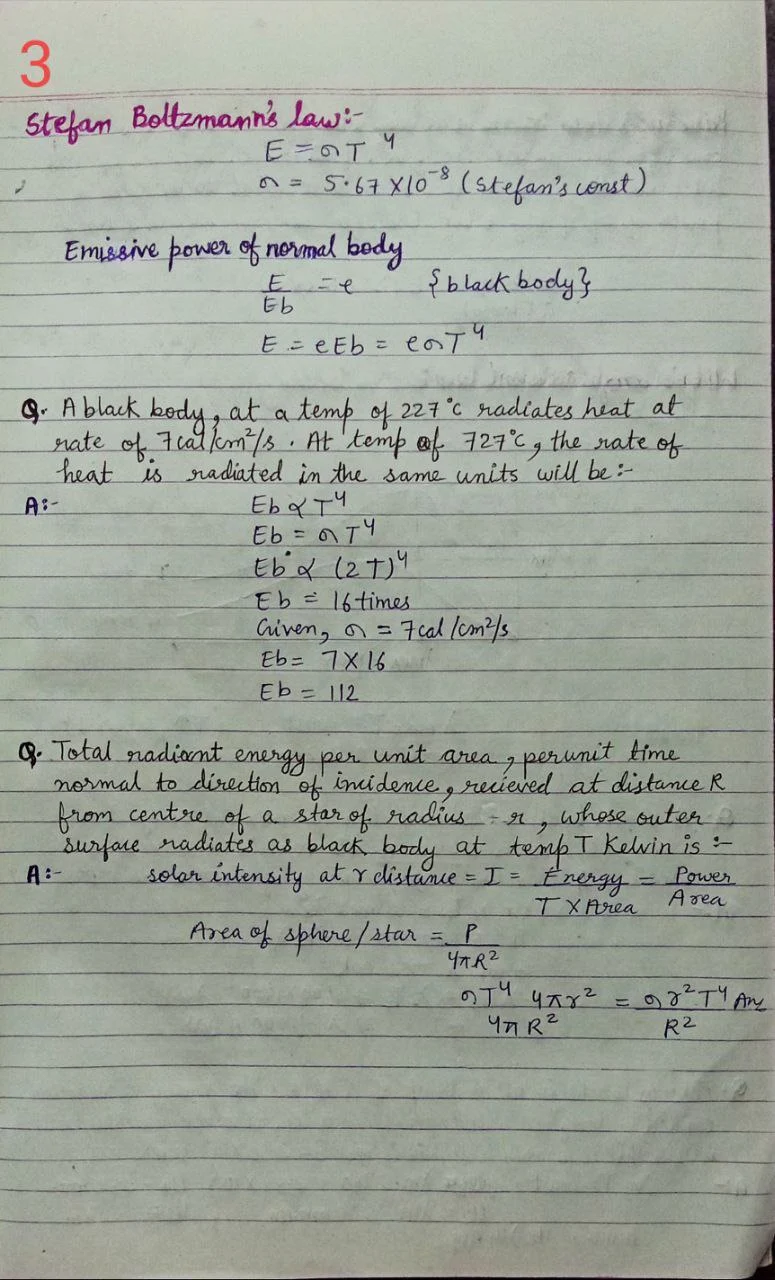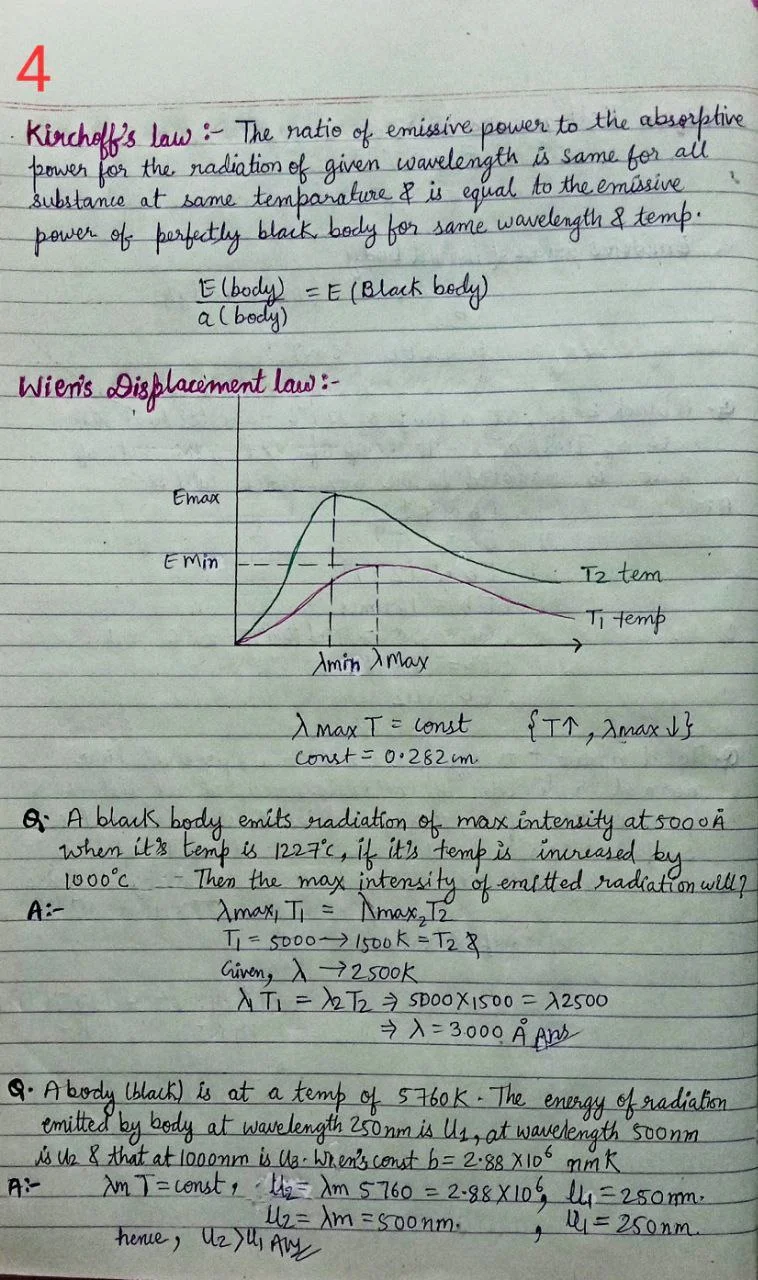Modes of Heat Transfer - In the world around us, heat transfer is a fundamental process that plays a crucial role in various phenomena. From warming your hands by a fire to cooking food on a stove, heat transfer dictates how thermal energy, the energy associated with the microscopic motion of atoms and molecules, moves from one object to another. This phenomenon is especially important in Class 11 Physics, where understanding the different modes of heat transfer becomes essential.
This article delves into the three primary modes of heat transfer: conduction, convection, and radiation. We'll explore their definitions, distinct characteristics, real-world examples, and practical applications. Additionally, a table summarizing the key formulas associated with each mode will be provided for a quick reference.
Modes of Heat Transfer: Definitions and Distinctions
Heat transfer occurs spontaneously from a region of higher temperature (hot object) to a region of lower temperature (cold object) until thermal equilibrium is reached. However, the mechanism by which this transfer takes place can differ depending on the medium involved. Here's a breakdown of the three main modes:
⦿ Conduction: This mode involves the transfer of thermal energy through direct physical contact between objects. When a hot object touches a cold object, the faster-moving particles in the hot object collide with the slower-moving particles in the cold object, transferring kinetic energy and consequently, heat. Metals like silver and copper are good conductors due to their loosely bound electrons that readily transfer kinetic energy.
⦿ Convection: This mode is prominent in fluids (liquids and gases) where heat transfer occurs through the bulk movement of the fluid itself. As a fluid is heated, it expands and becomes less dense, causing it to rise. Conversely, cooler and denser fluid sinks, creating a circular motion known as a convection current. This continuous circulation facilitates heat transfer throughout the fluid. Boiling water and air circulation in a room due to a radiator are classic examples of convection.
⦿ Radiation: Unlike conduction and convection, radiation does not require any medium for heat transfer. It involves the transmission of electromagnetic waves, including infrared radiation (heat waves), that travel through space at the speed of light. The Sun's warmth reaching Earth is a prime example of heat transfer via radiation. Even hot objects like the filament in a light bulb emit thermal radiation.
Understanding these fundamental distinctions between conduction, convection, and radiation is crucial for grasping how heat transfer occurs in various situations.
Examples Illustrating the Modes of Heat Transfer
To solidify your understanding, let's explore some real-world examples of each mode:
⦿ Conduction: Holding a metal spoon in hot soup, a metal frying pan transferring heat to food, or a spoon warming up in a cup of hot coffee are all instances of conduction.
⦿ Convection: The rising hot air from a radiator heating a room, the circulation of air currents creating wind, or the movement of water in a pot as it boils are all examples of convection.
⦿ Radiation: Sunbathing on a sunny day, feeling the warmth from a fireplace, or the heat emitted from a light bulb are all instances of heat transfer via radiation.
By recognizing these everyday examples, you can readily identify the dominant mode of heat transfer at play.
Applications of Modes of Heat Transfer in Our World
The knowledge of heat transfer modes has numerous practical applications across various fields:
⦿ Conduction: Heat sinks in electronic devices use conduction to dissipate heat away from sensitive components. Cooking utensils are often made of good conductors to ensure efficient heat transfer for cooking food.
⦿ Convection: Natural convection currents in the atmosphere are responsible for weather patterns. Air conditioners and radiators utilize forced convection to regulate room temperature.
⦿ Radiation: Infrared technology is used in night vision devices and remote controls. Solar panels capture radiant energy from the Sun to generate electricity.
These examples showcase the diverse applications of heat transfer modes in our everyday lives and technological advancements.
Formula Table (for reference):
⦿ Conduction: Heat transfer rate (Q) = k * A * ΔT / L (where k is thermal conductivity, A is the area of contact, ΔT is the temperature difference, and L is the distance between the objects)
⦿ Convection: (Formulas for convection can be complex and depend on specific situations. We will focus on the qualitative understanding in this article.)
⦿ Radiation: Stefan-Boltzmann Law: Q = σ * ε * A * T^4 (where σ is Stefan-Boltzmann constant, ε is emissivity, A is surface area, and T is absolute temperature)
We will explore each of these modes in more detail in the following sections, along with illustrative examples and their applications in various fields.
FAQs about Modes of Heat Transfer
1. Can all three modes of heat transfer occur simultaneously?
Absolutely! In many real-world scenarios, a combination of conduction, convection, and radiation takes place. For instance, when you cook soup in a pot on a stove, the metal pot heats up by conduction from the flame. The hot soup then transfers heat to the surrounding air and other parts of the pot through convection currents. Additionally, the pot and soup radiate heat outwards to the environment.
2. Which mode of heat transfer is the fastest?
Conduction is generally the fastest mode of heat transfer, especially in solids with high thermal conductivity (like metals). This is because the transfer of thermal energy relies on direct contact between particles, facilitating a more efficient transfer.
3. Which mode of heat transfer is most important for heating a room?
Both convection and radiation play significant roles in heating a room. Conduction transfers heat from the heat source (like a radiator) to the surrounding air. This warm air then rises due to convection, creating circulation and distributing heat throughout the room. Additionally, radiators also emit infrared radiation, which can directly heat objects in the room.
4. How can we insulate our homes to minimize heat transfer?
Insulation materials like fiberglass or rockwool work by trapping air, which is a poor conductor of heat. This creates a barrier that hinders heat transfer by conduction from the interior to the exterior of the building. Additionally, reflective materials can be used to minimize radiant heat transfer.
5. How is the concept of heat transfer used in everyday appliances?
Heat transfer principles are fundamental to the operation of many appliances. For example, refrigerators use a combination of conduction and convection to remove heat from the inside and transfer it to the outside coils. Ovens utilize radiation and convection to cook food. Understanding these modes allows engineers to design efficient and effective appliances.








